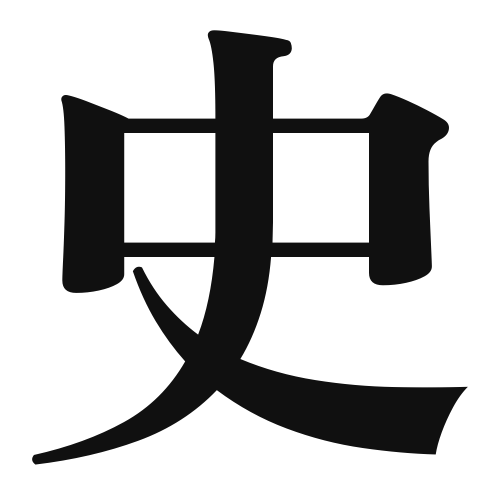1. Overview of Meaning
The kanji “史” (shi) means “history” or “chronicle.” It is used to refer to historical records or the study of past events.
2. Formation and Radical
Formation of the Kanji: The kanji “史” is classified as a pictogram, originally depicting a person writing or recording events. It represents the concept of documenting history.
Radical: The radical for “史” is “口” (kuchi), which means “mouth.” This suggests the idea of speaking or narrating, aligning with the concept of recounting history.
3. Examples of Usage
Common Words and Phrases:
- 歴史 (rekishi) – history
- 史書 (shisho) – historical texts
Example Sentences in Daily Conversation:
- 日本の歴史はとても興味深いです。 (Nihon no rekishi wa totemo kyōmi-bukai desu.) – Japanese history is very interesting.
- この本は古代の史書について書かれています。 (Kono hon wa kodai no shisho ni tsuite kakareteimasu.) – This book is written about ancient historical texts.
4. Synonyms and Antonyms
Similar Kanji:
- 歴 (reki) – This kanji also relates to history but emphasizes the timeline or sequence of events.
Antonyms:
- 未来 (mirai) – meaning “future,” which contrasts with the concept of history.
5. Cultural and Historical Background
Relation to Japanese Culture: The concept of “史” is deeply embedded in Japanese culture, where historical narratives play a crucial role in understanding identity and heritage.
Proverbs and Idioms:
- 歴史は繰り返す (rekishi wa kurikaesu) – “History repeats itself,” emphasizing the cyclical nature of historical events.
